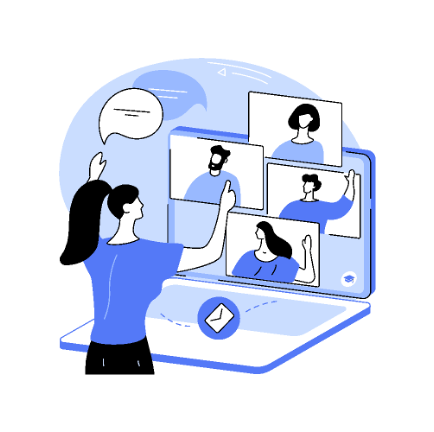Poster presentations at conferences and in-person events have long been a staple in our industry, and for good reason. Scientific poster presentations are designed to maximize educational value in an efficient and succinct manner while allowing for discussion and direct interaction with the audience. They provide a place for questions to be answered immediately by the author and facilitate conversation about future directions and new considerations for the research and protocols used.
Perhaps not surprisingly, virtual, or online poster sessions provide scientists with all the benefits of in-person poster forums, such as discussing the importance of their research as well as supporting collaboration, innovation and discovery, without the need for traveling through airports and hotel lobbies with a giant poster tube. They also provide some unique opportunities that in-person presentations cannot offer.
Below are some tips on how to design and deliver a memorable virtual scientific poster presentation:
Virtual posters can be delivered in a few different ways, but the most popular format involves a slide deck. You can use any presentation building software, like Keynote or Microsoft PowerPoint. Poster presentations tend to be 10-15 minutes or less, so keep that in mind when putting your slides together. In-person poster presentations usually involve one large, printed poster that is broken down into several sections, much like a publication would be:
- Title and Author Information
- Introduction
- Methods
- Results, with Figures and Tables
- Discussion/Conclusions
- Acknowledgments and Disclosures
Keep these sections in mind when building your slide deck, as this format is generally the best way to tell the story of your research in an easily digestible way.
1. Title and Author Information
Your Title Slide should include your contact information and affiliations. You can also take this opportunity to inject a little personality into your presentation by sharing a bit about who you are, both as a scientist and as an individual. At in-person sessions, you’re able to put a personal touch on every aspect of the presentation, from the colors you use to the way you dress and deliver your content to how you “break the ice” with scientists walking by. Take this opportunity to hop on your webcam and let the virtual audience know a bit more about you to help them connect to your work and your research.
2. Introduction
The introduction should be a single slide and should cover the most important “Ws” for your research, like Why should the audience care about your work? What is my research question and how will I answer it? The words on the slide should be minimal and formatted into bullet points, and you should be delivering the majority of the extra information verbally. Whatever your WHY is, make sure it’s clear in this section, and bonus points if it ties into your conclusions!
3. Methods
The major benefit to virtual posters is the ability for video content! Find a video (or make a video) of your protocol that shows the important steps. It’s the easiest and fastest way to explain your methods while keeping your audience engaged. This section should be limited to 1 or 2 slides and should only cover the most important methods; nobody will care about how you sterilized your surgical instrument kit in the autoclave, but they will care about the surgery!
4. Results, with Figures and Tables
SHOW OFF YOUR DATA! But make sure you’re sharing it in the clearest way possible. Insanely complicated figures are not keeping anyone awake, so if you’re going to show a complicated figure, explain it thoroughly and use animations to point out specific areas of significance. Include figures for the most compelling areas of the project and leave supplementary information in the “resources” section of the poster auditorium. That information is important too, just not important enough to spend significant time talking about.
5. Discussion/Conclusions
These slides should ultimately address the points you stated in your introduction section. What did the data show, what can you conclude from that data and how does it fit within the bigger story? These slides should also have minimal text and might even include summary diagrams or schematics. You should definitely refer back to your original research questions and explain how your experiment(s) answered those questions.
6. Acknowledgments and Disclosures
One short and sweet “thank you” slide to acknowledge everyone involved in your work is the best way to conclude your presentation. Use this time to hop back on your webcam, as it leads nicely into the Q&A portion of the event where you can “interact” with your audience by answering their questions and discussing their suggestions.

For more tips and tricks on how to share your research using virtual posters, check out our virtual poster archive HERE and click the button below to contact our team!



